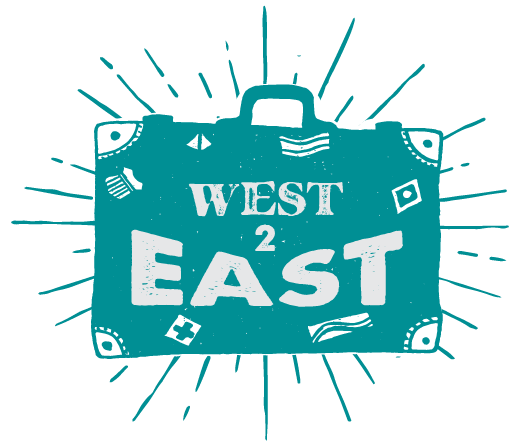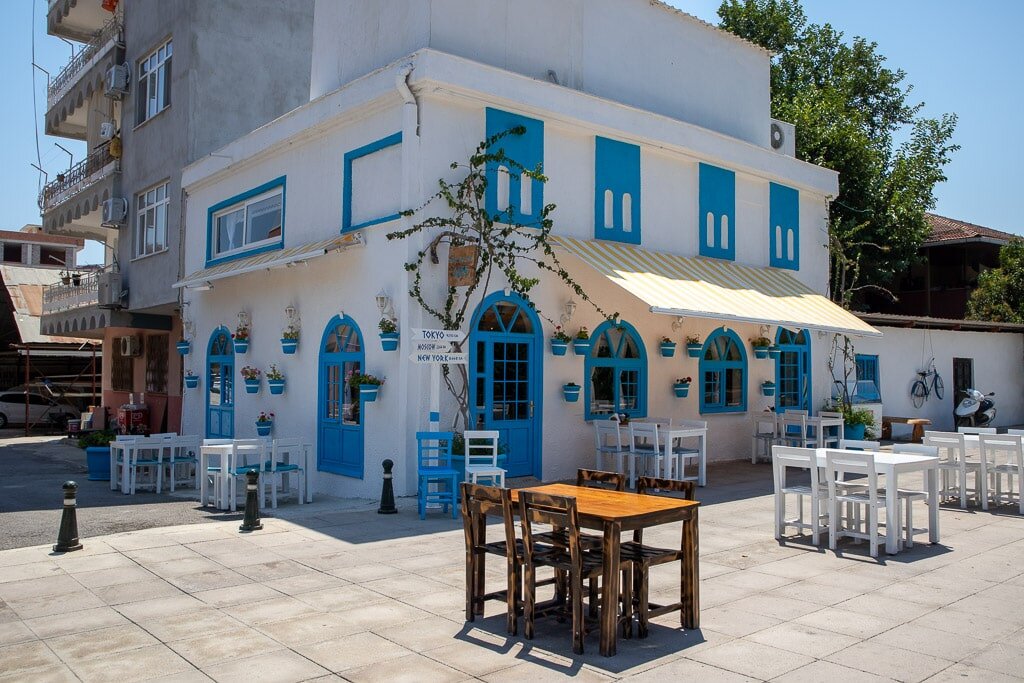Turkey: The Birthplace of St. Nicholas
Merry Christmas!! Santa Claus is a figure with a lot of nicknames: St. Nick, Kris Kringle, Father Christmas, Grandfather Frost. But what about the man behind the legend, Saint Nicholas? Yes, he was a real man and he was from none other than present-day Turkey.
I can hear some of you saying to yourselves, “Now, wait a minute!” But I speak the truth. The man is not only from present-day Turkey, but from the coastal city of Patara, which has the longest beach in the country. How St. Nicholas moved from being a beach bum to a snow bird we’ll save for another day.
Isn’t Patara a great beach!?!
When St. Nicholas was born in 280 A.D. the city of Patara was part of the Lycian Kingdom. He later became the bishop of Myra (present-day Demre), which is not very far from Patara. Nicholas was known as a generous man and is today a patron saint of Greece and Russia. December 6, the day of his death, is known as St. Nicholas Day.
Before we get too far into talking about the church, let me just point out this really cute cafe pictured below. We stopped in for lunch and it was so good! You may be thinking to yourself, “That looks Greek.” You would be right. Before Turkey was a country it was part of the Ottoman Empire, and there were many Greeks living in what is now Turkey. We wrote a story about one such person and you can read about it here.
The church building seen today, protected by a metal roof, is from the 6th century with many restorations and annexes added throughout the centuries until the 12th century. The church’s walls are covered with Byzantine frescoes from the 12th and 13th centuries. The last renovation of the building took place in 1862 by the Russian Archeological Institute.
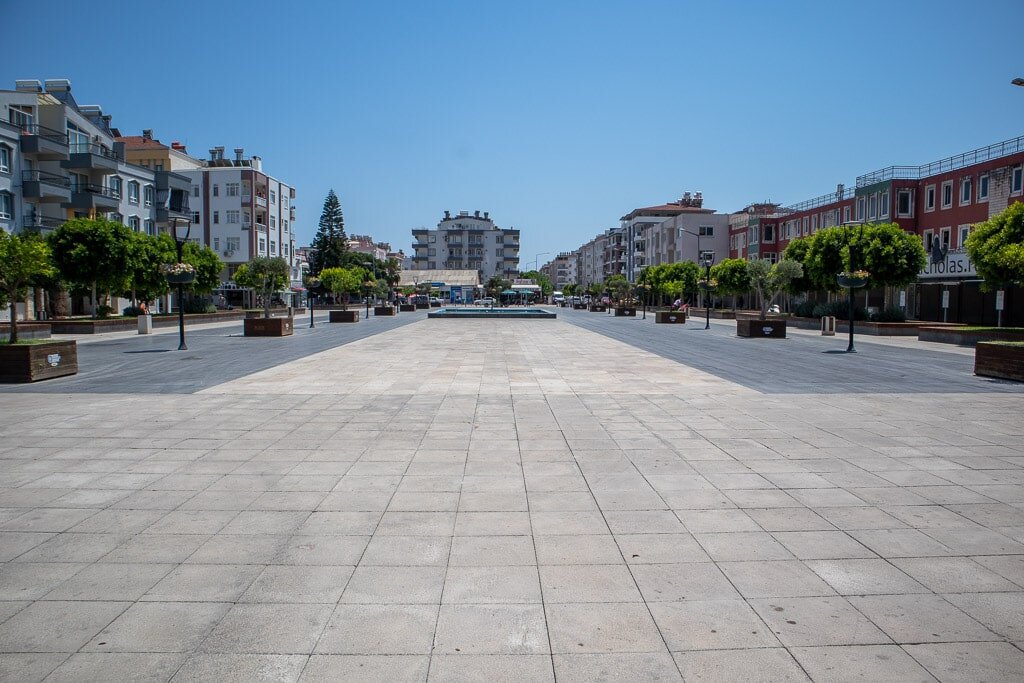
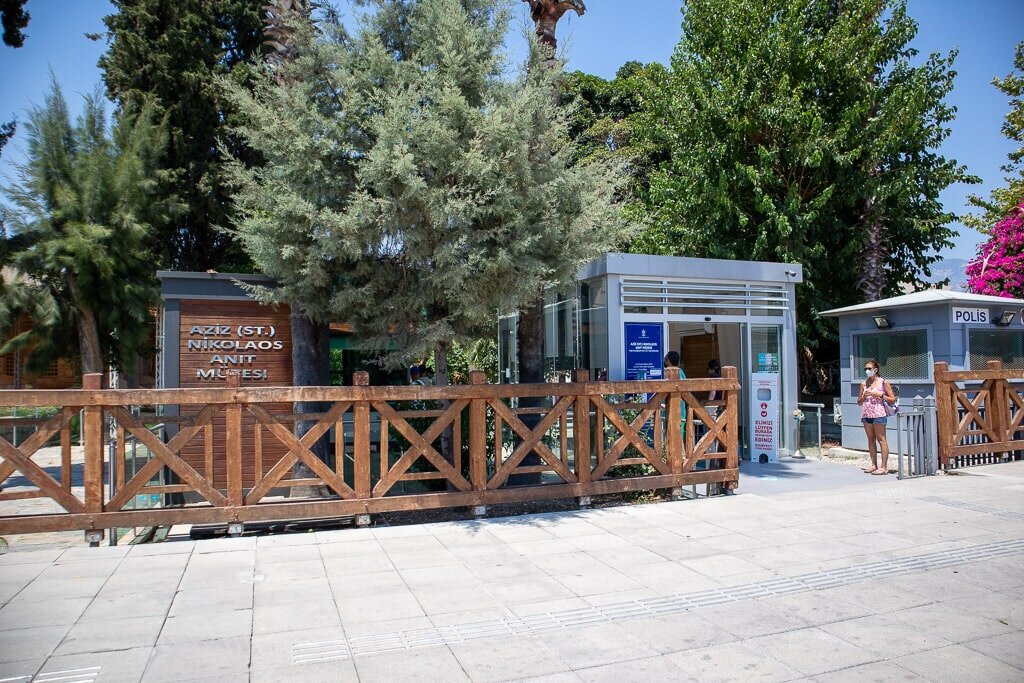

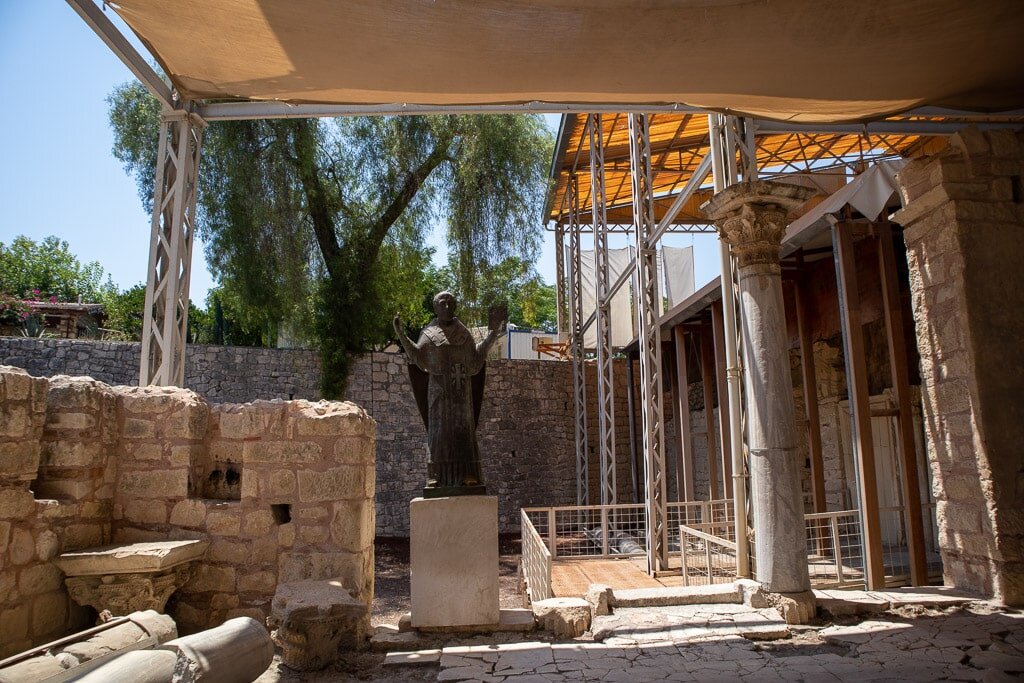
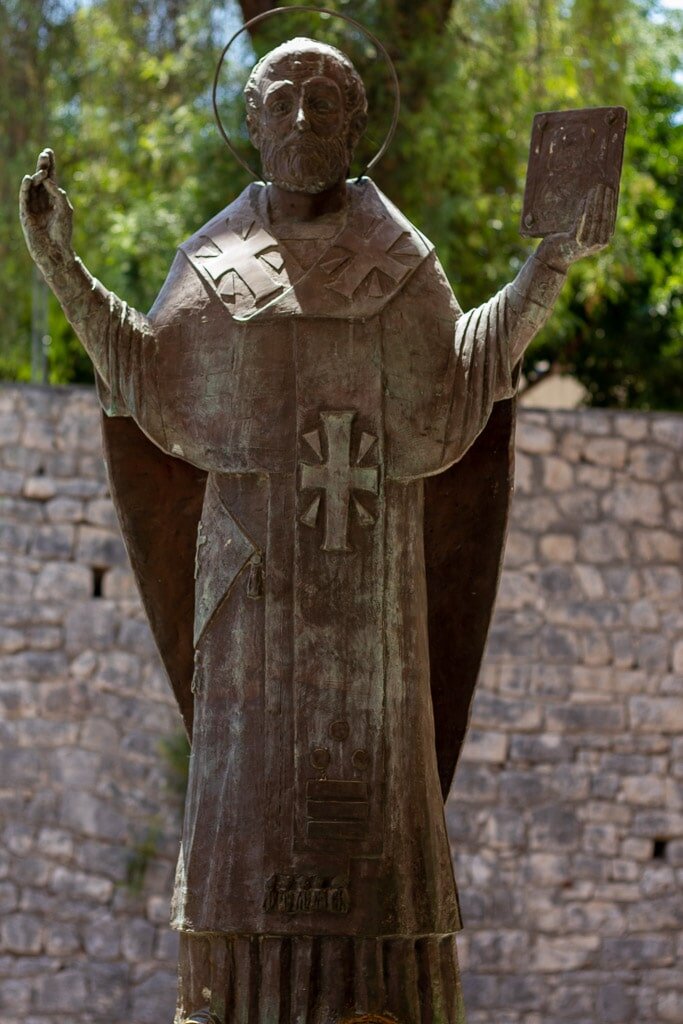
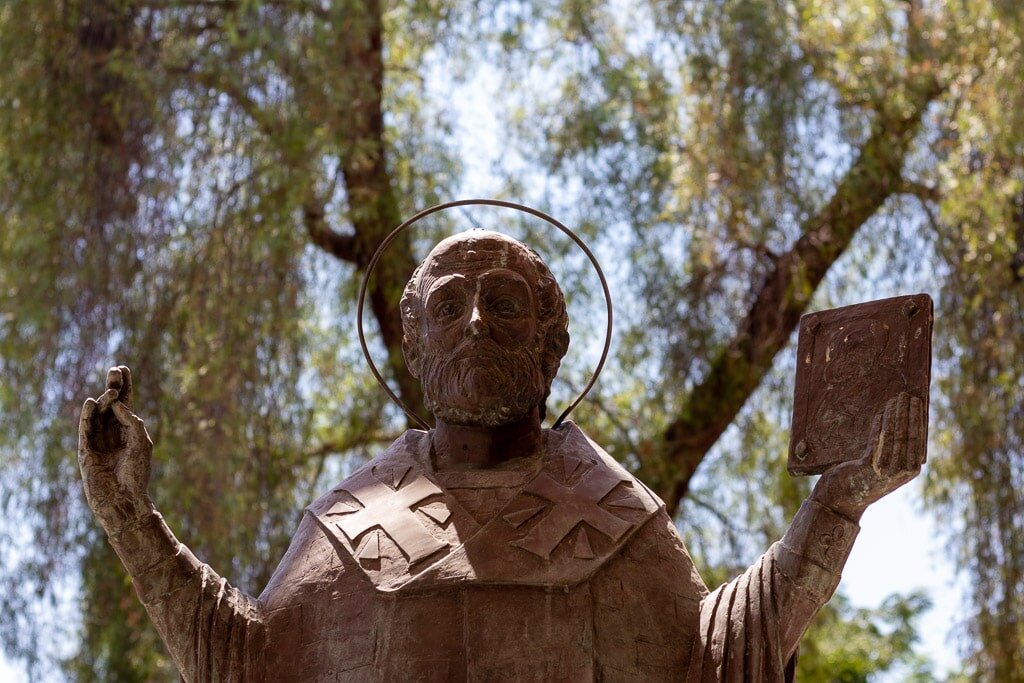
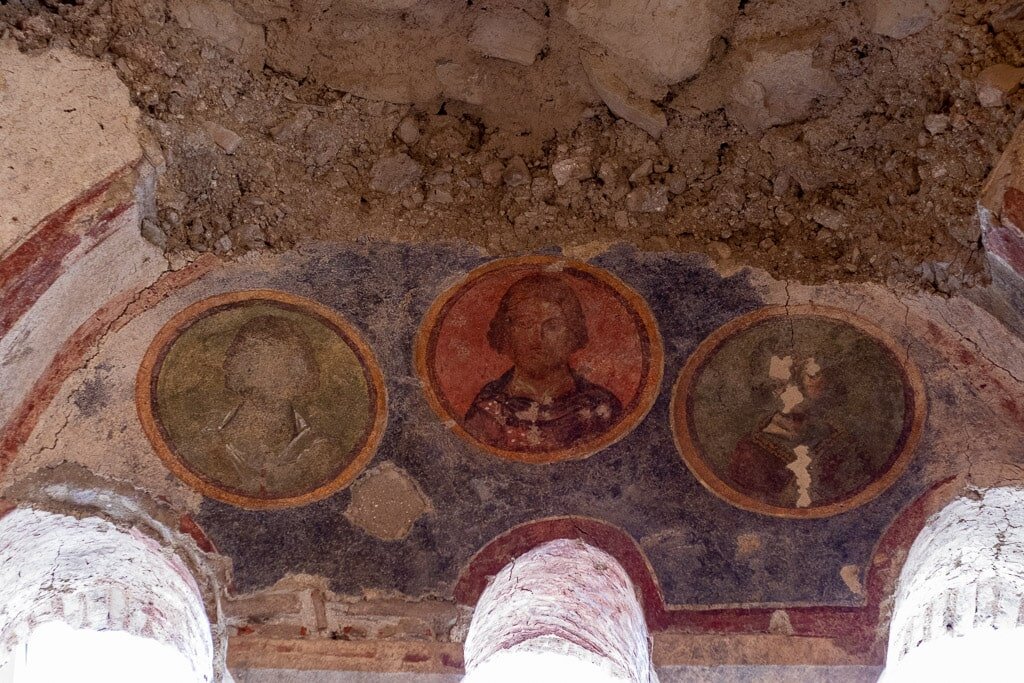
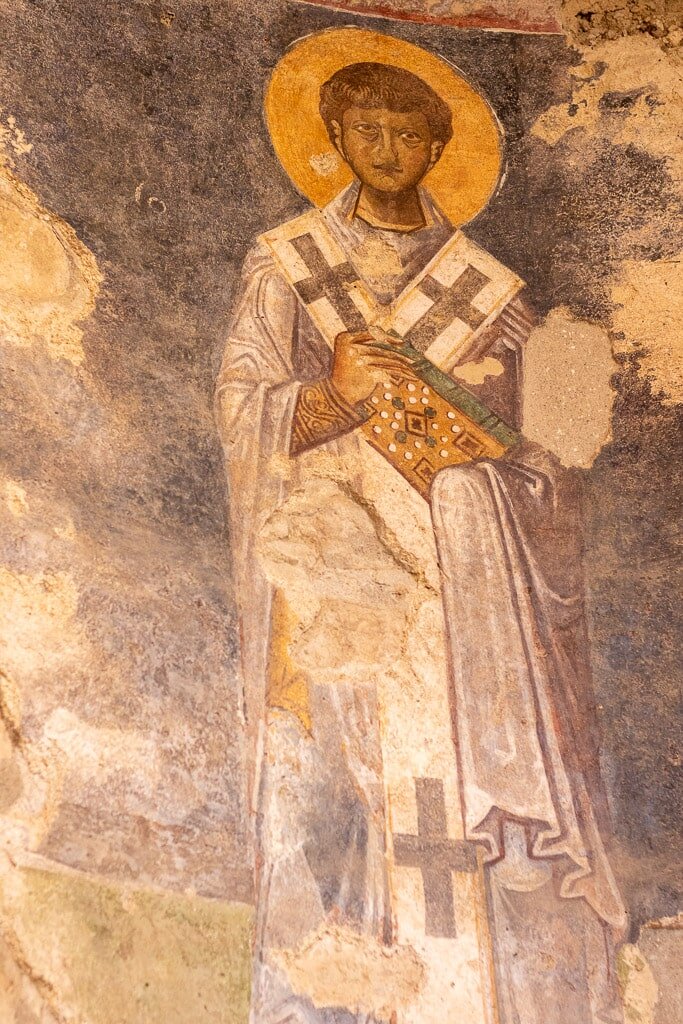
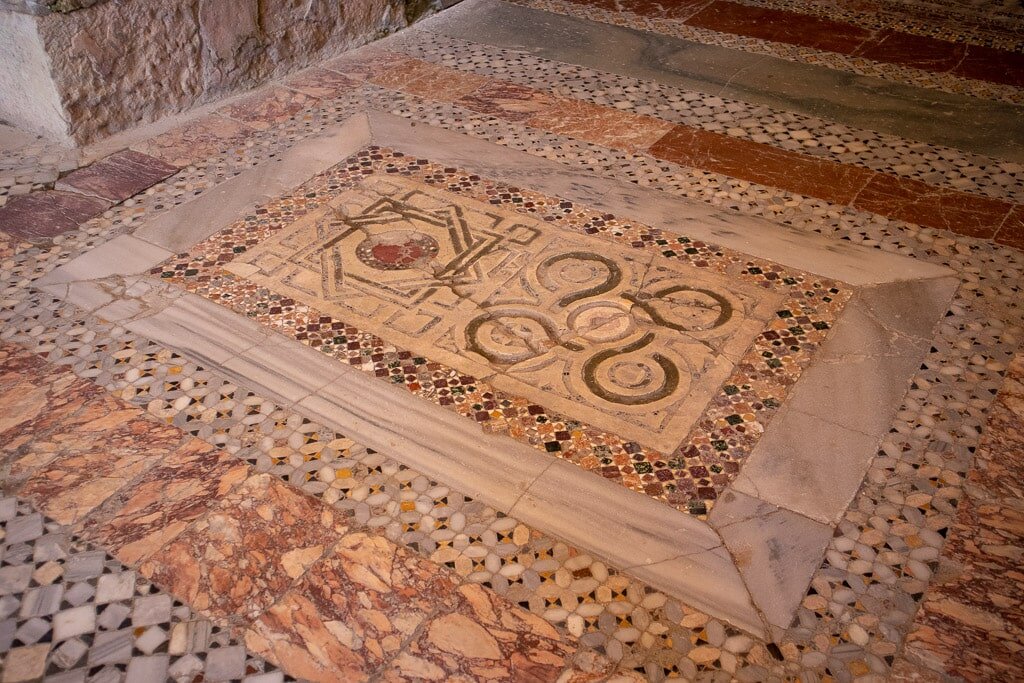
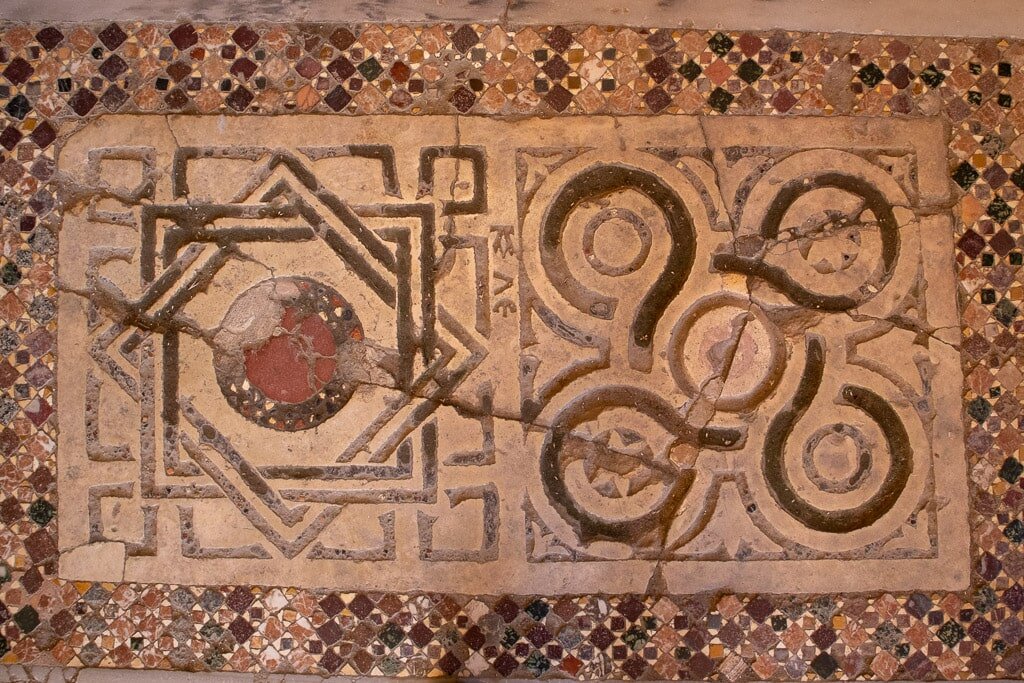
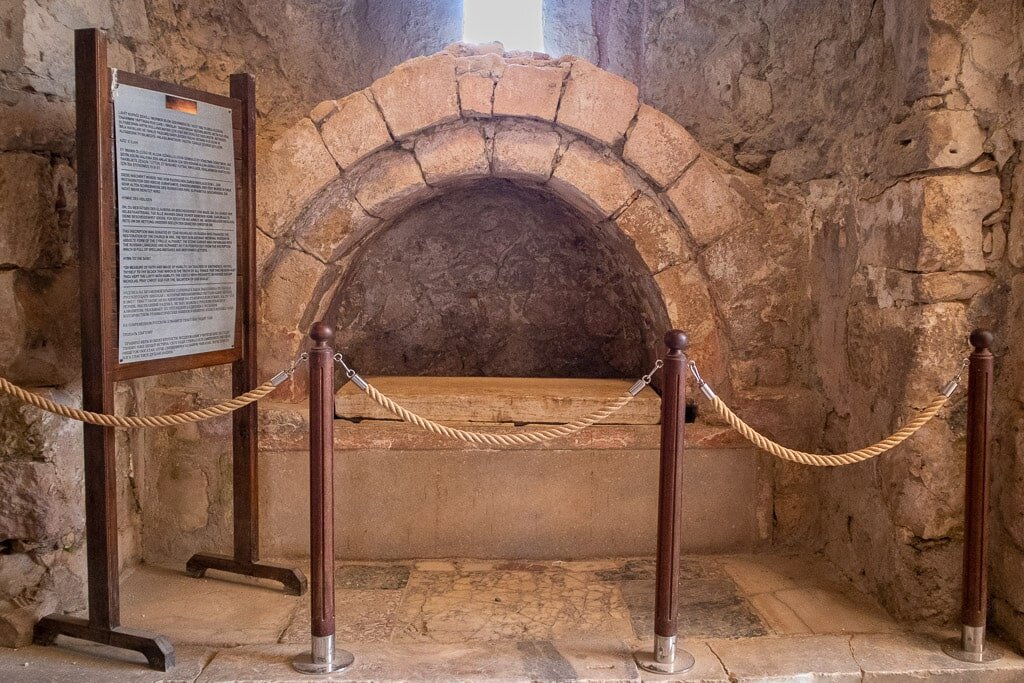
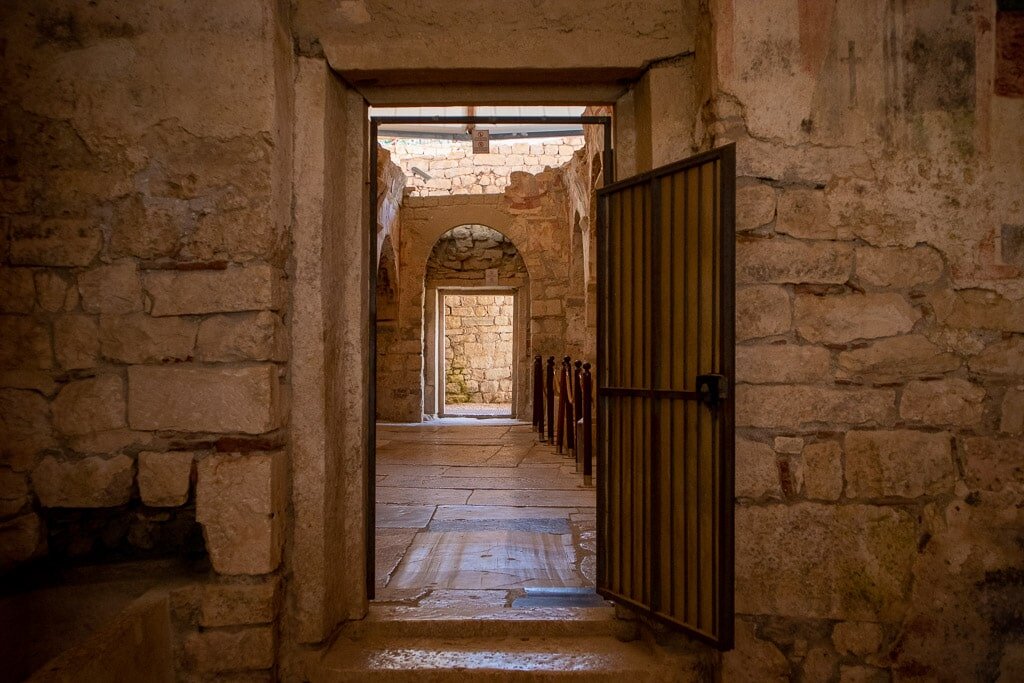
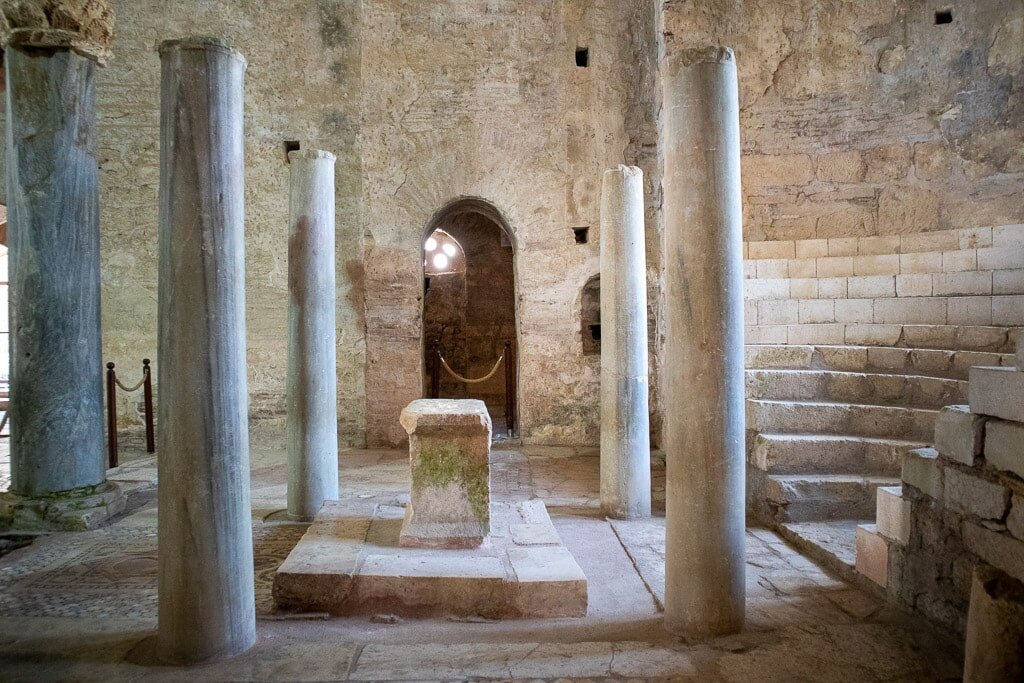
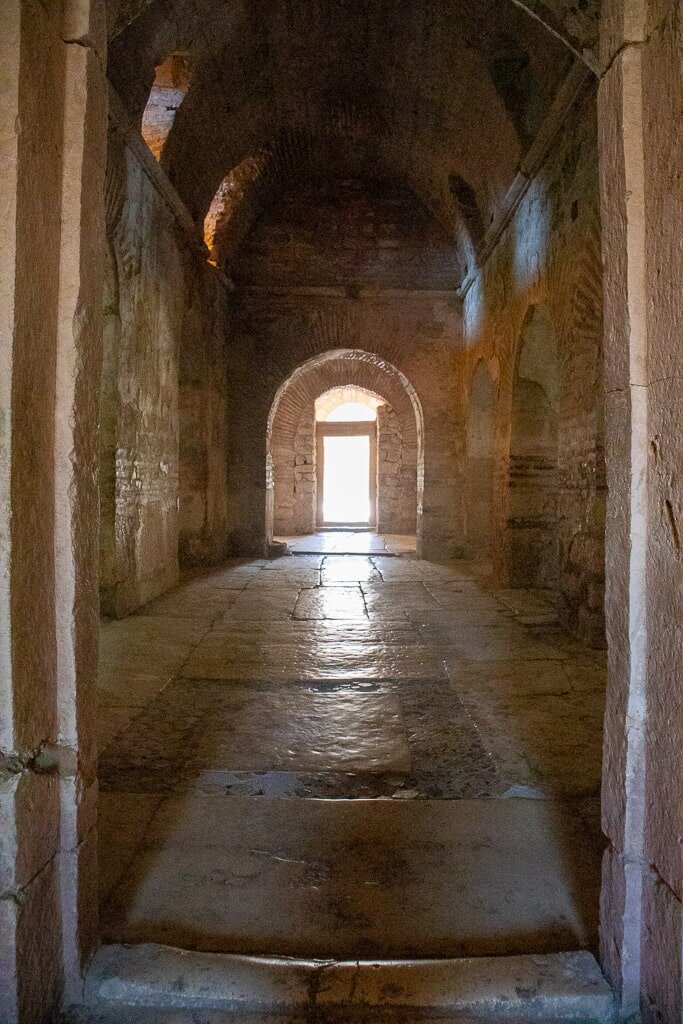
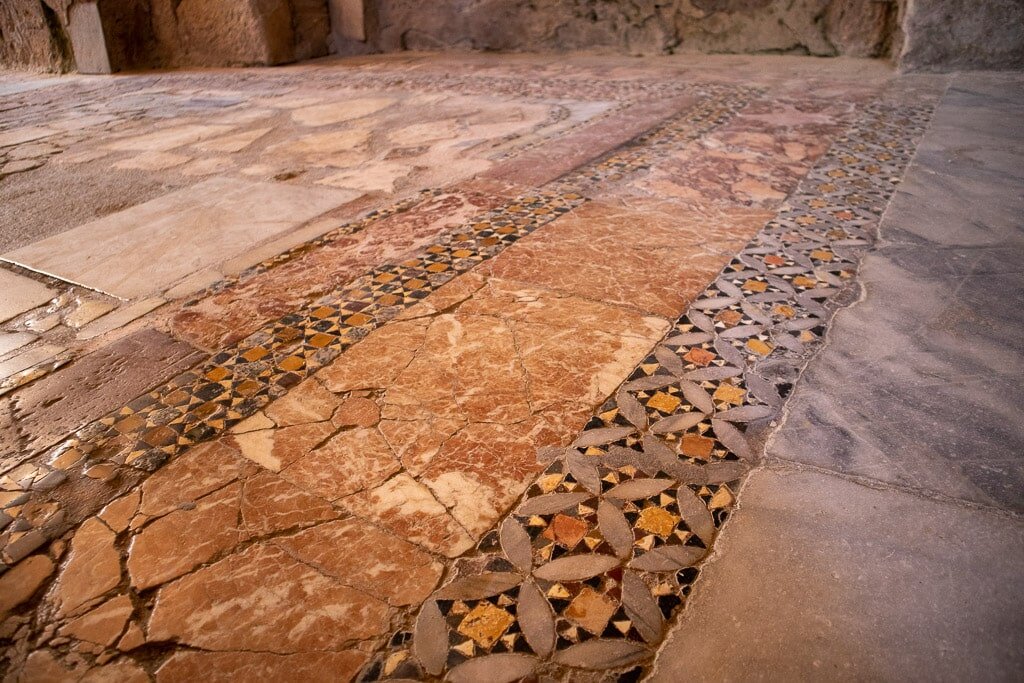
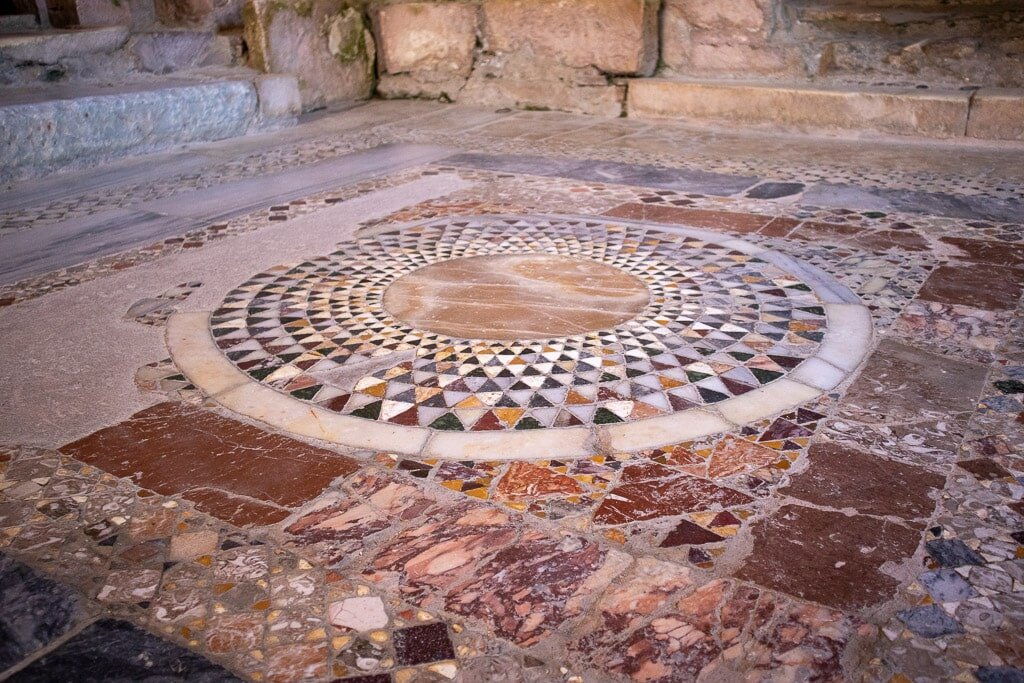
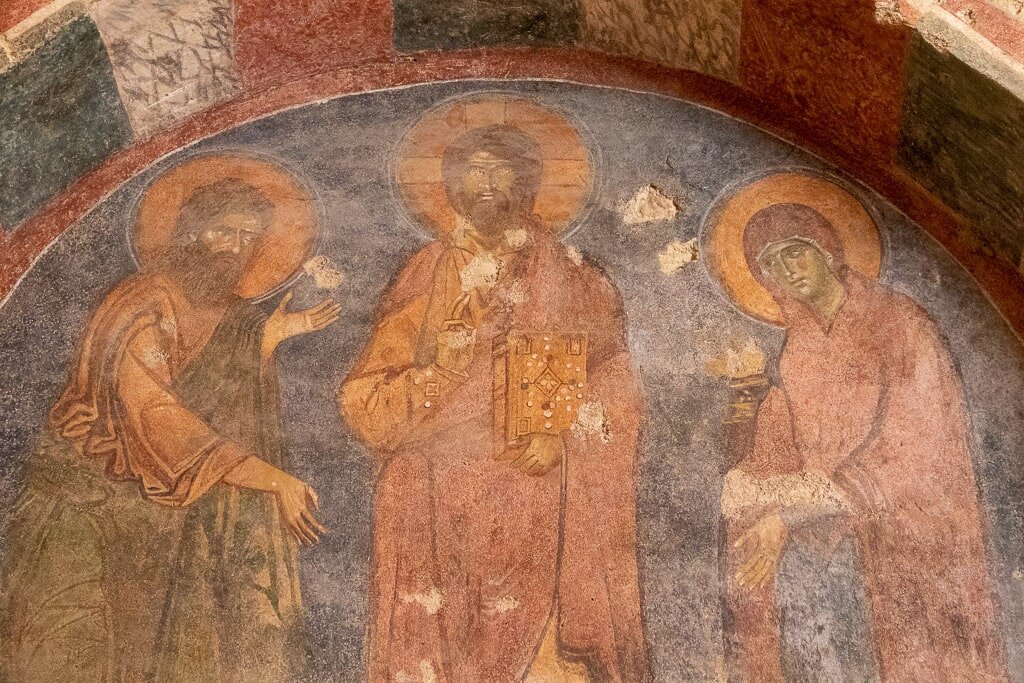
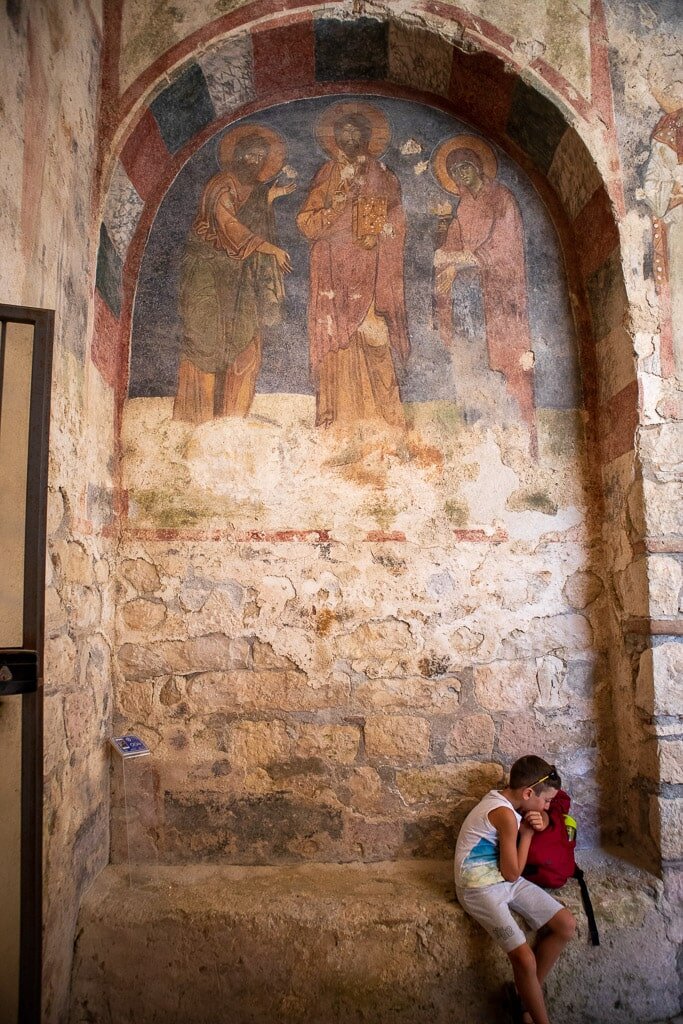
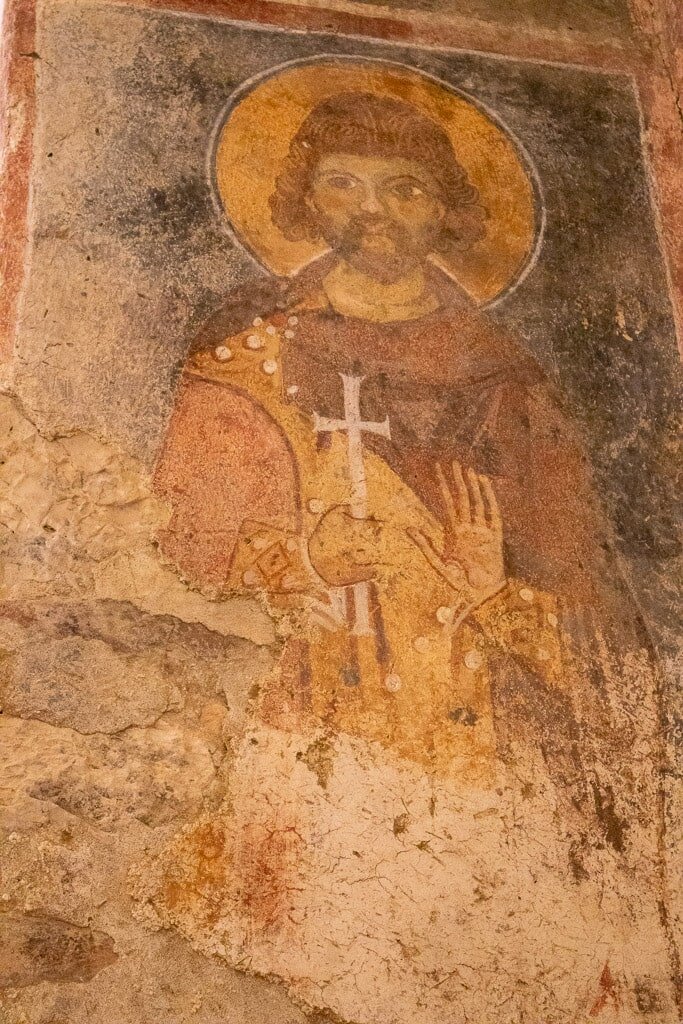
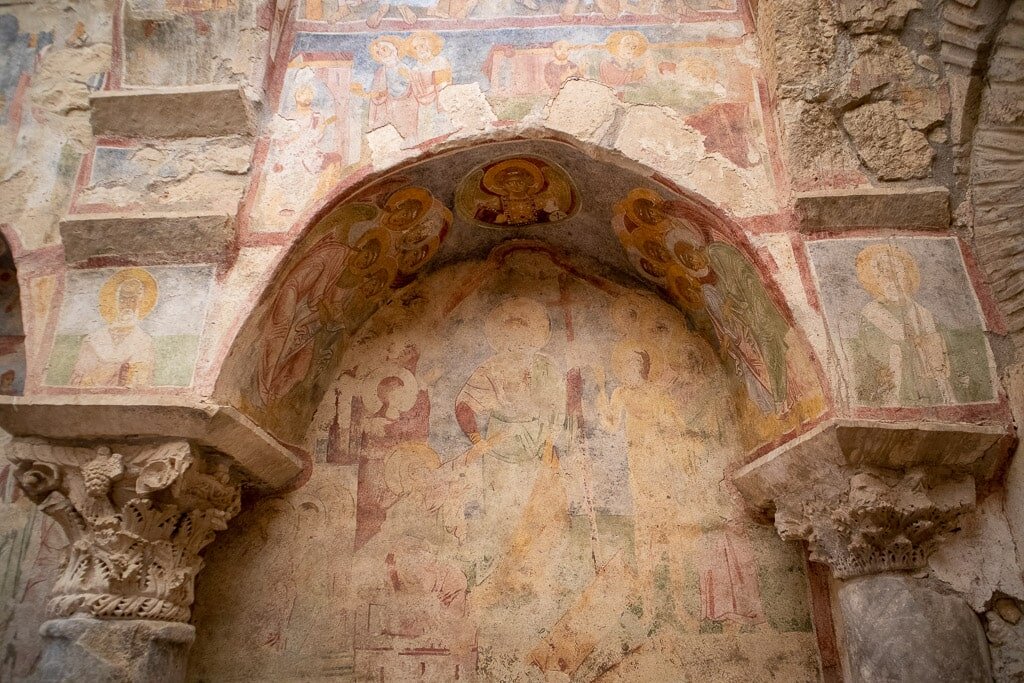
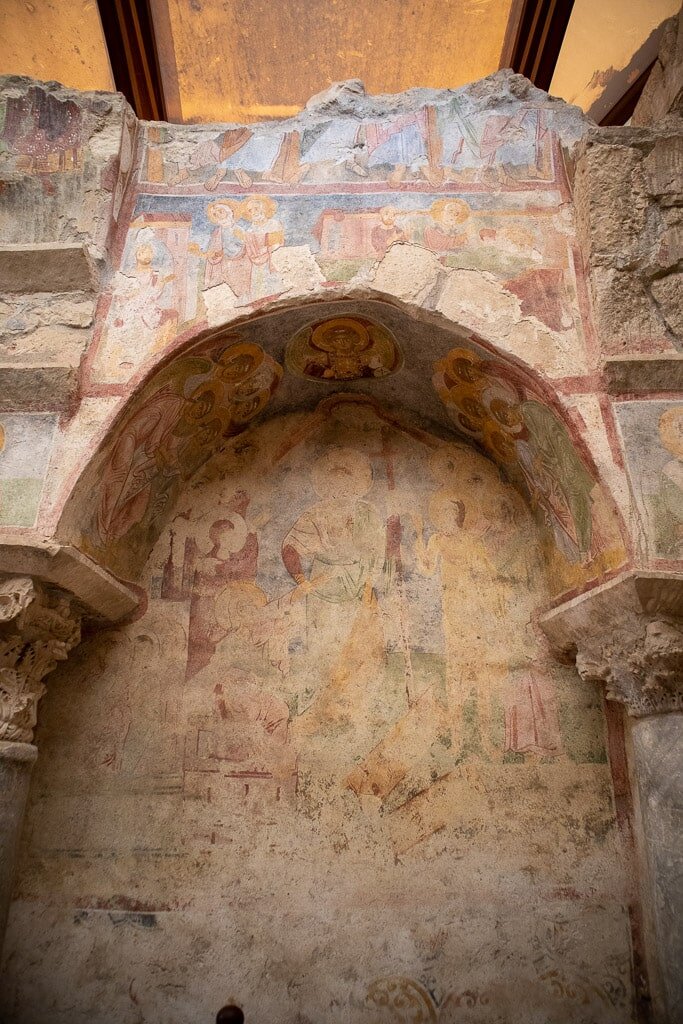
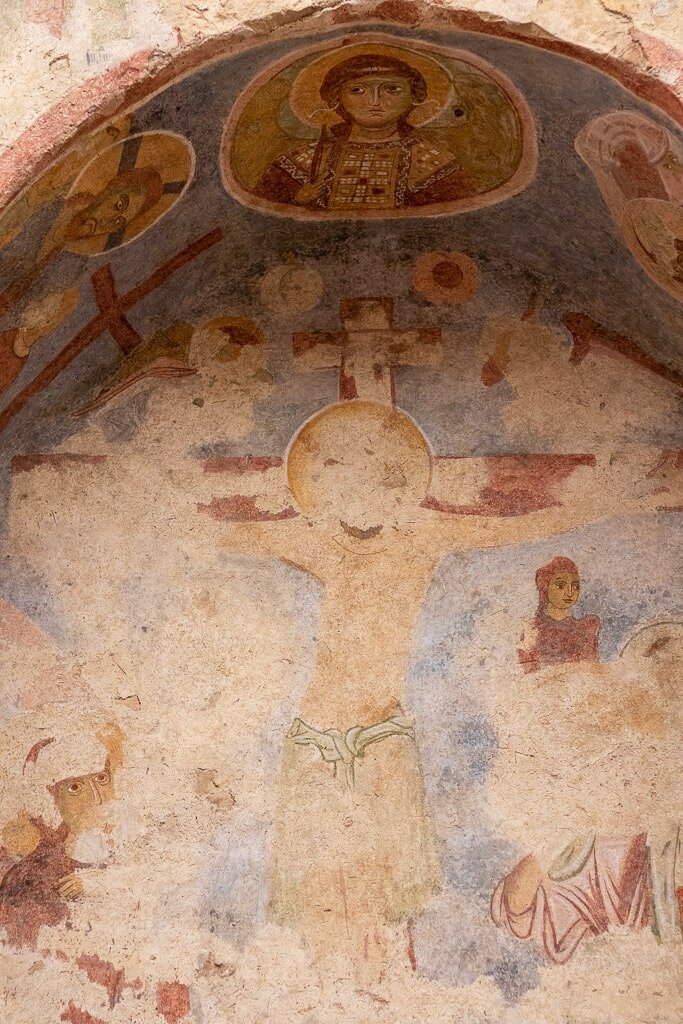
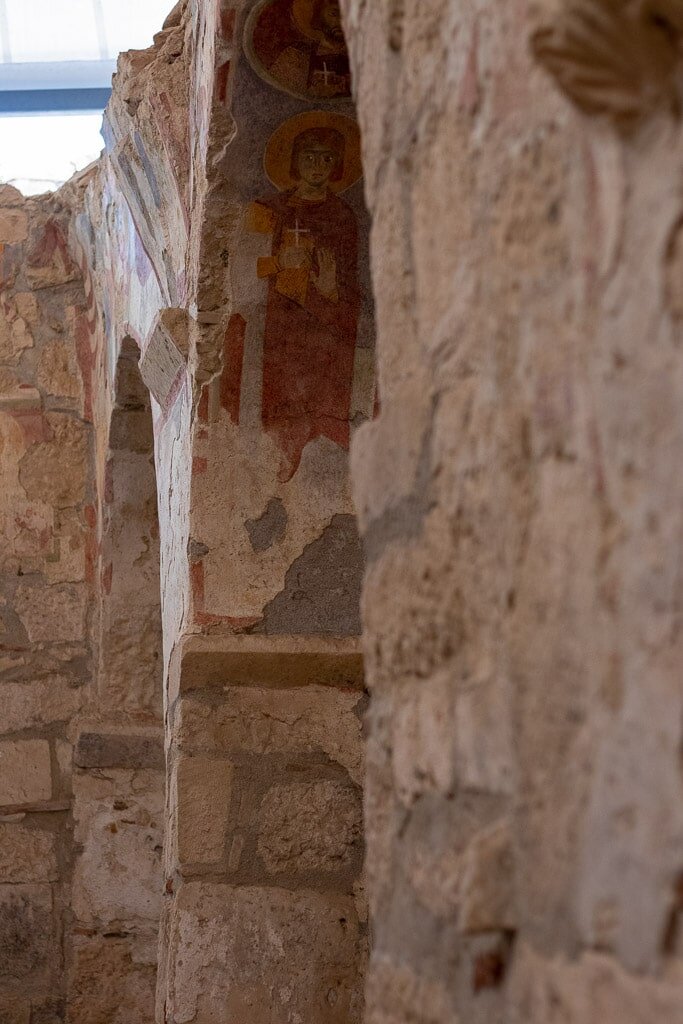
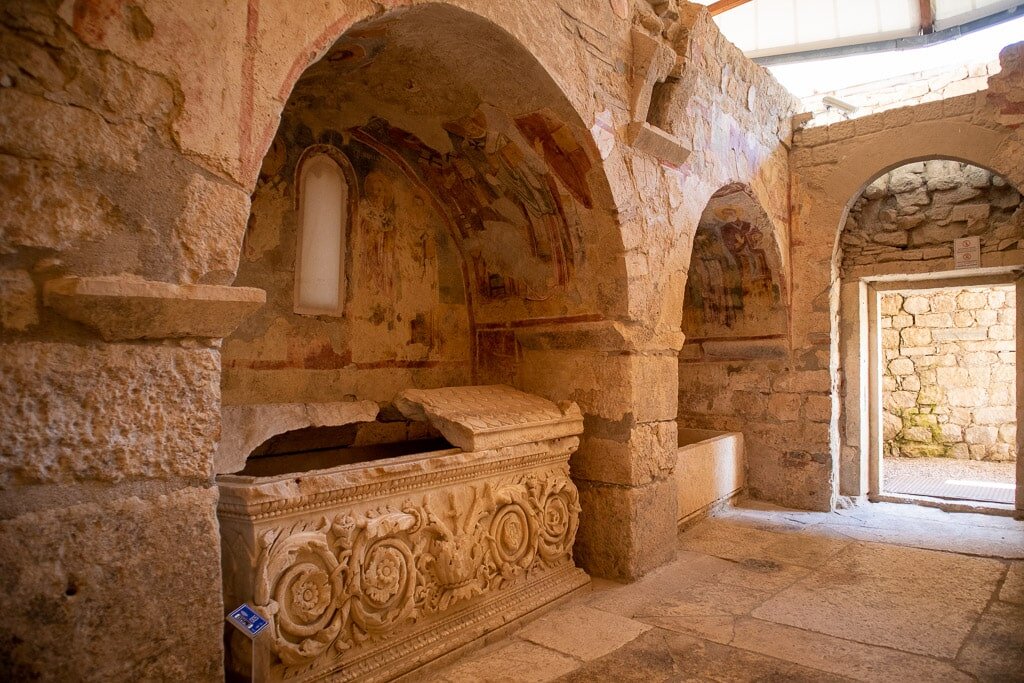

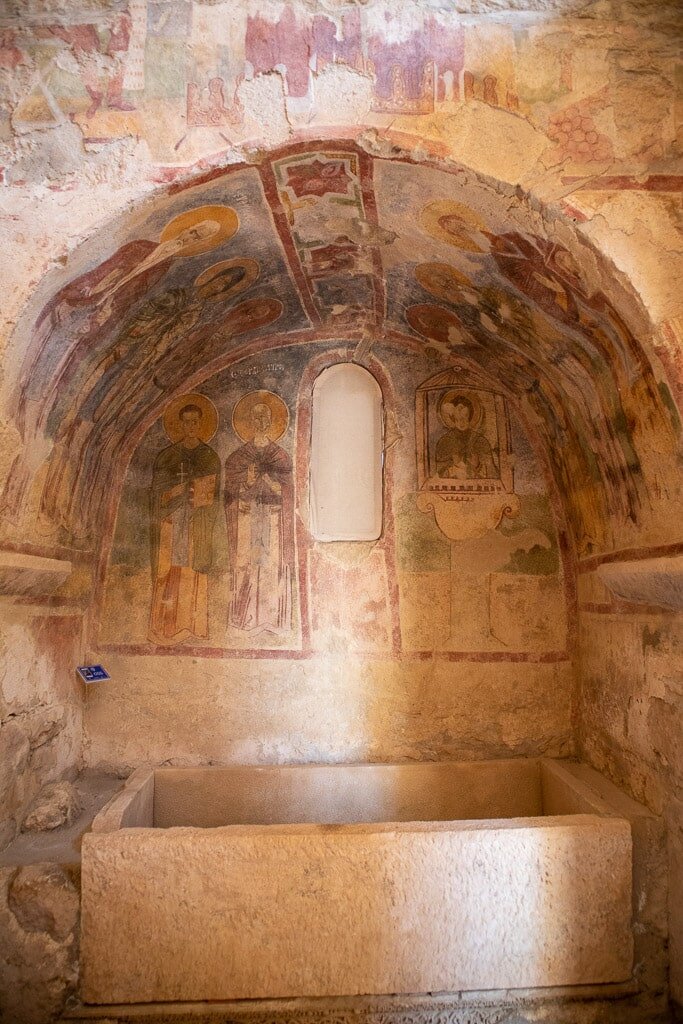
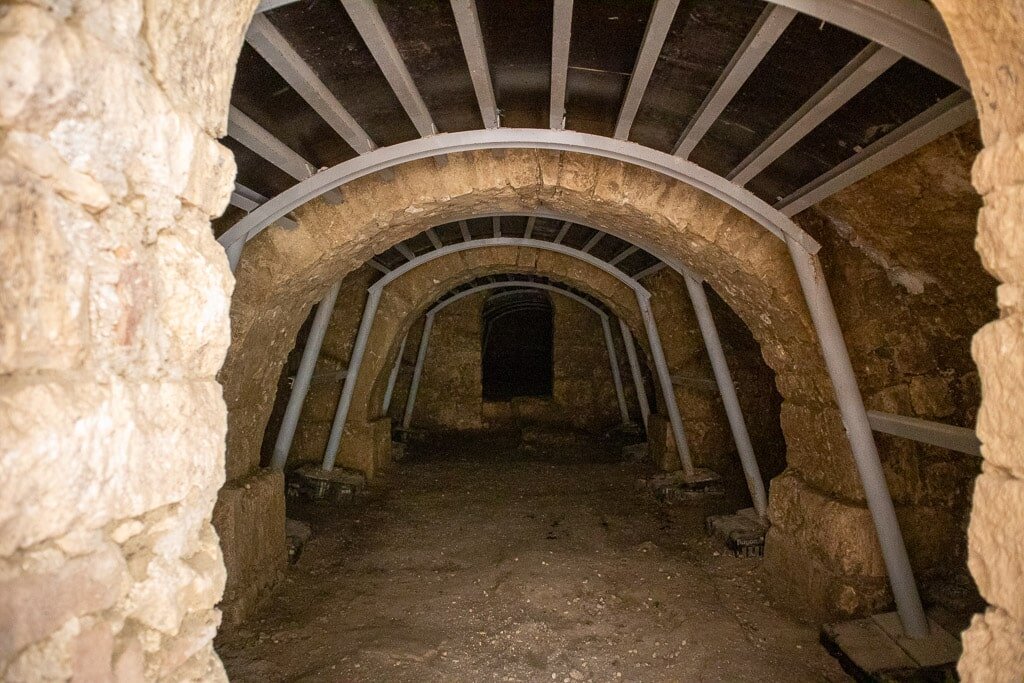
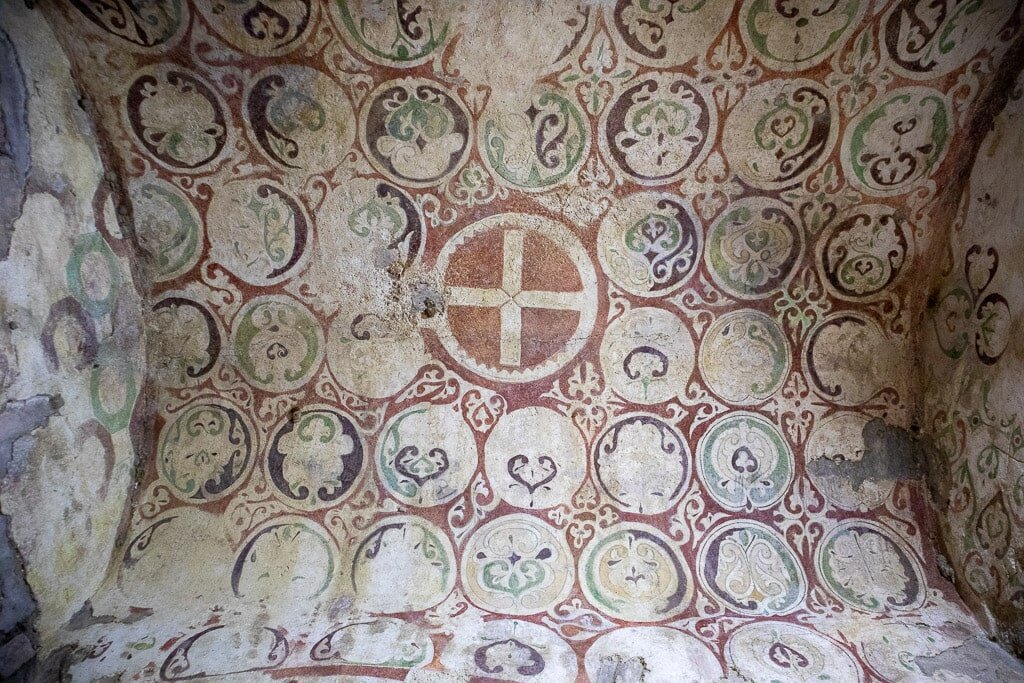
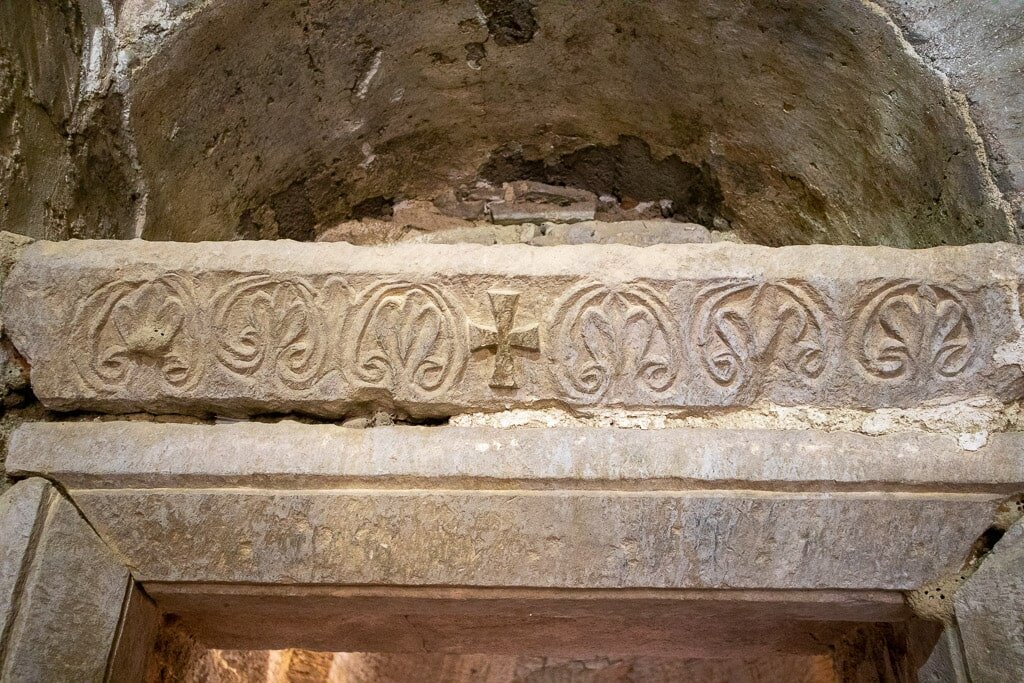

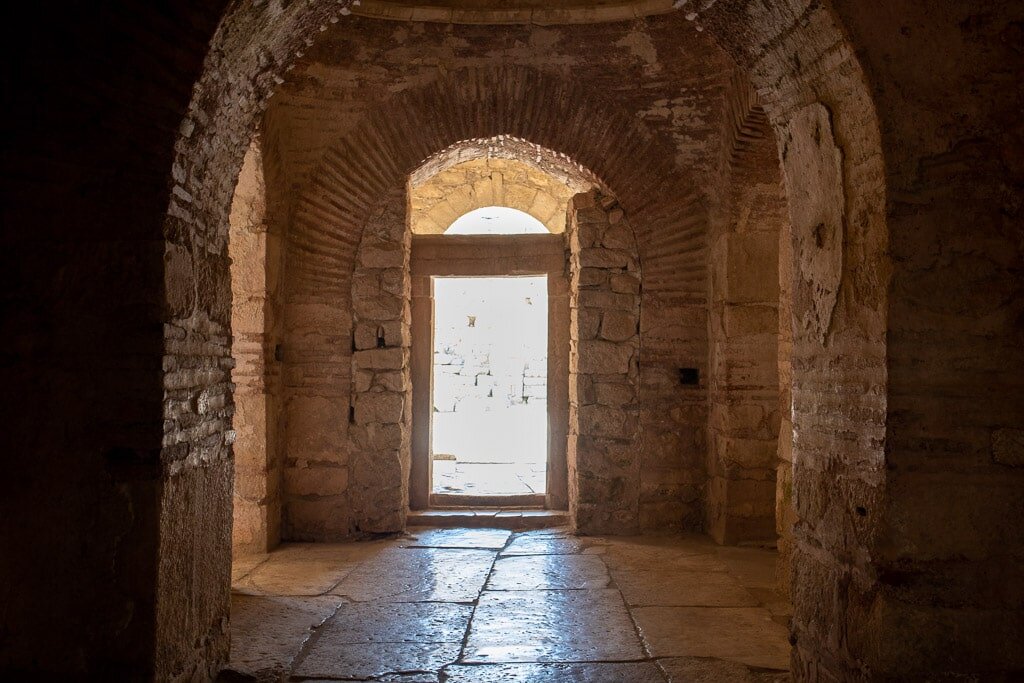
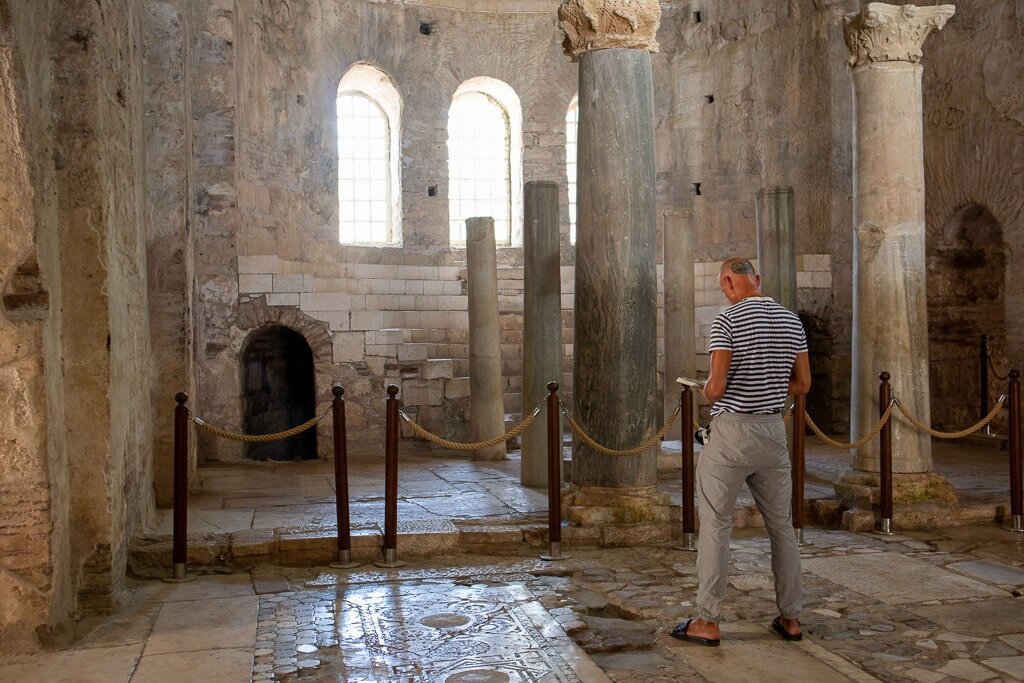
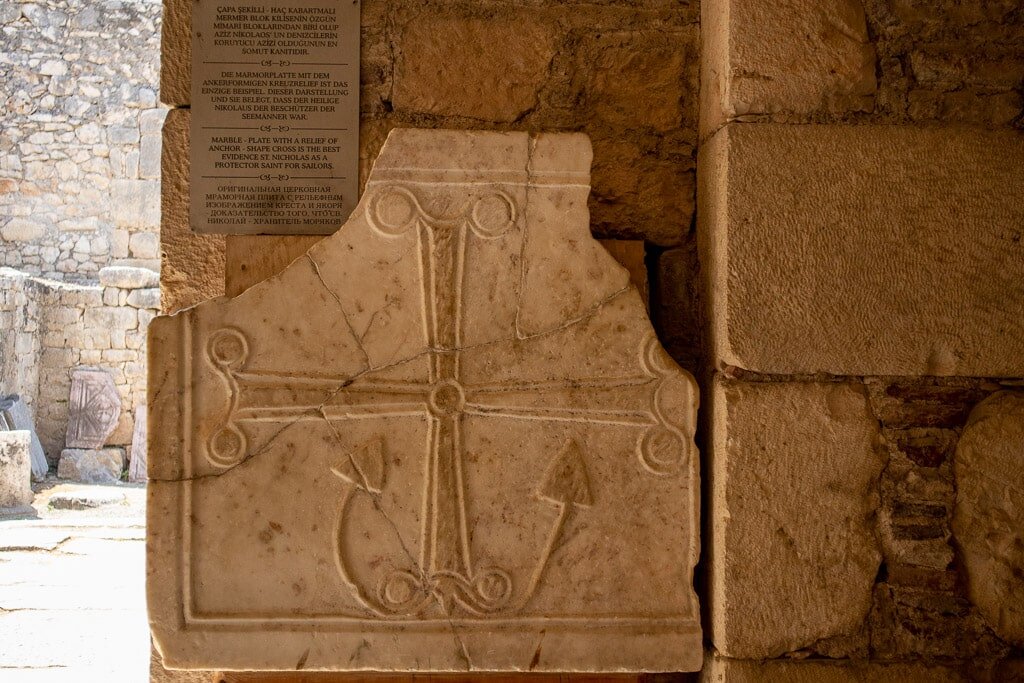
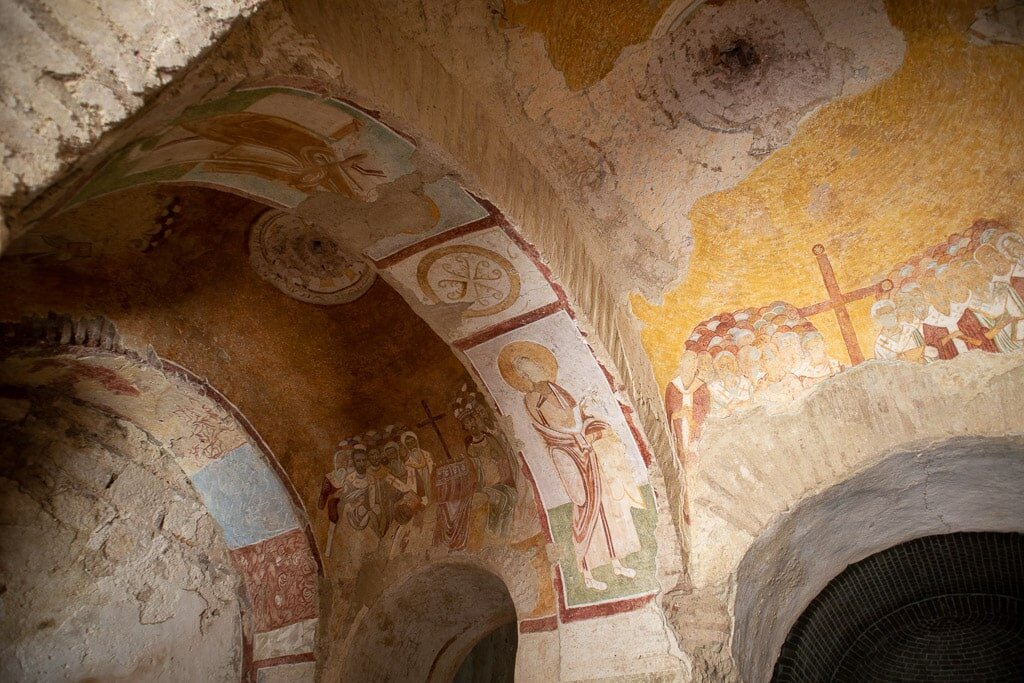
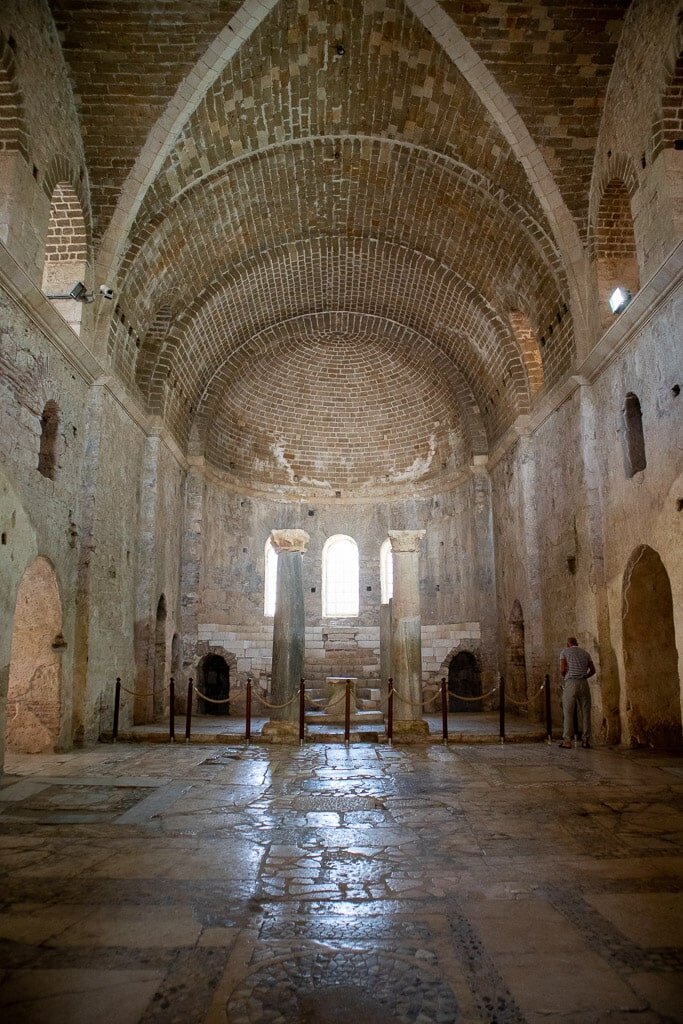
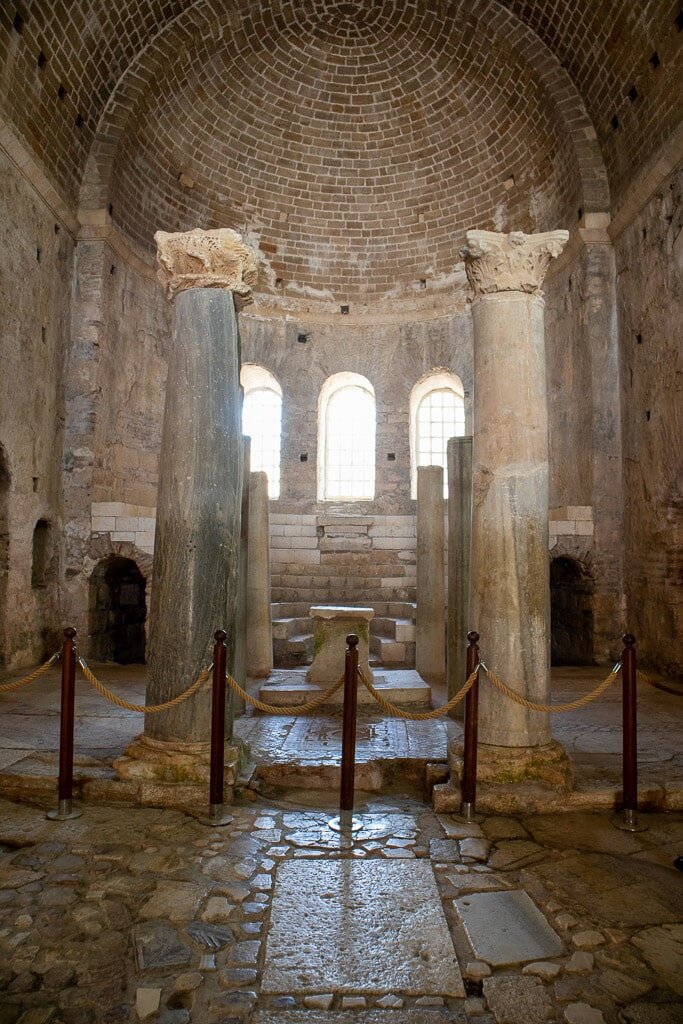
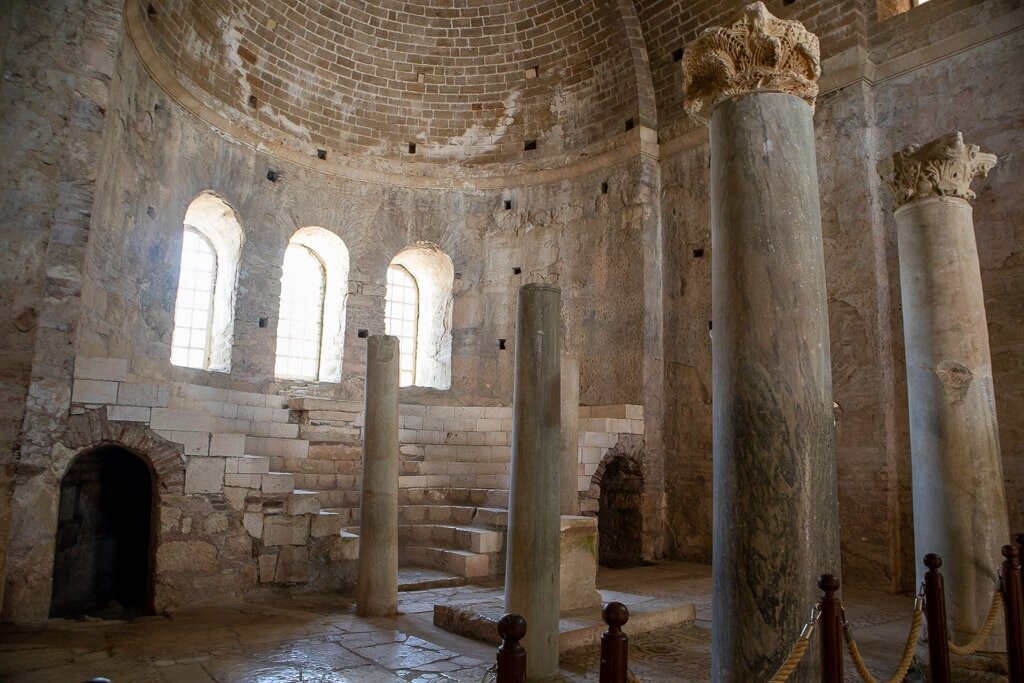
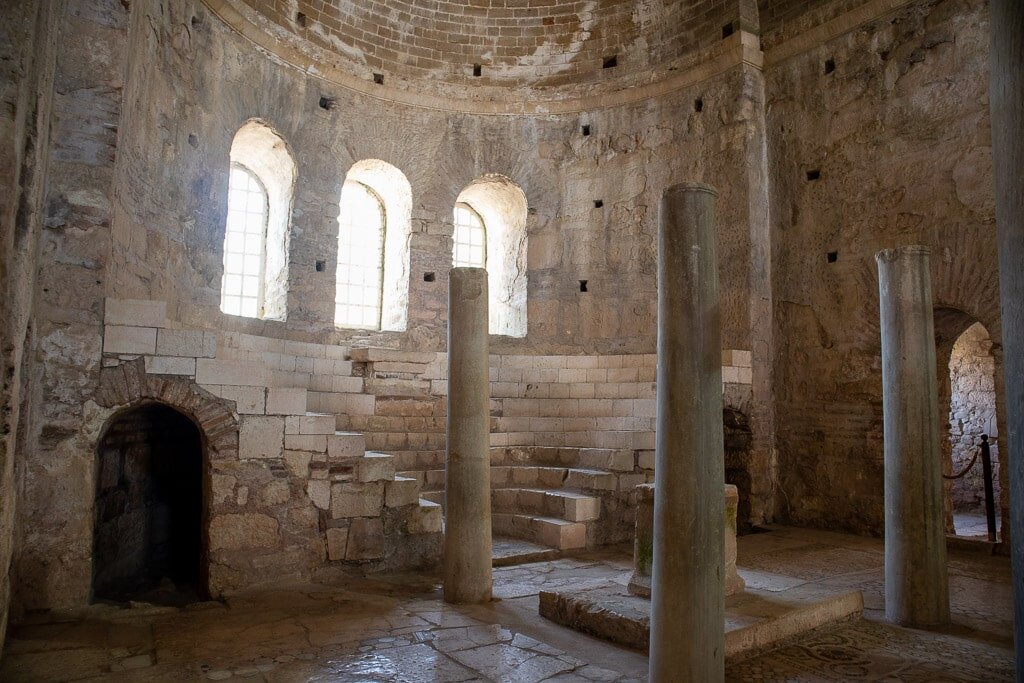
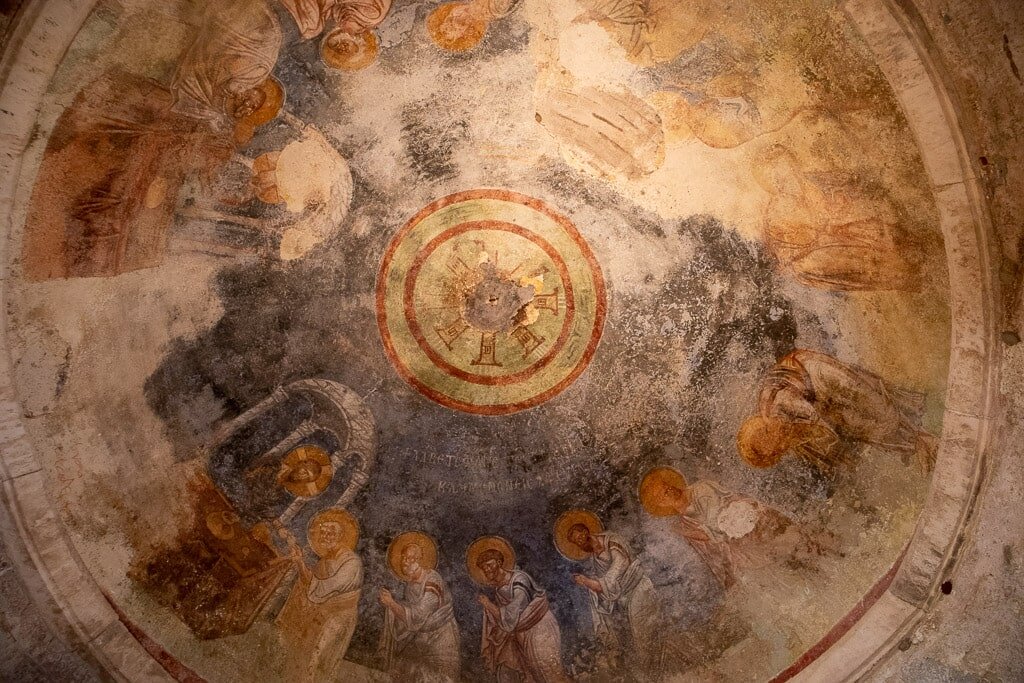
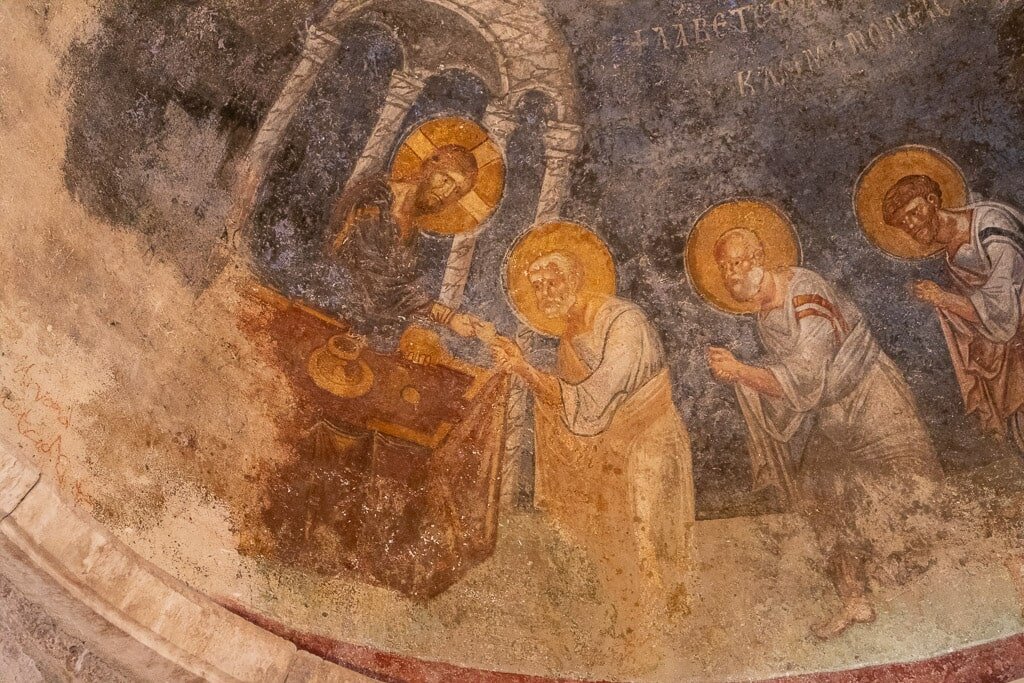
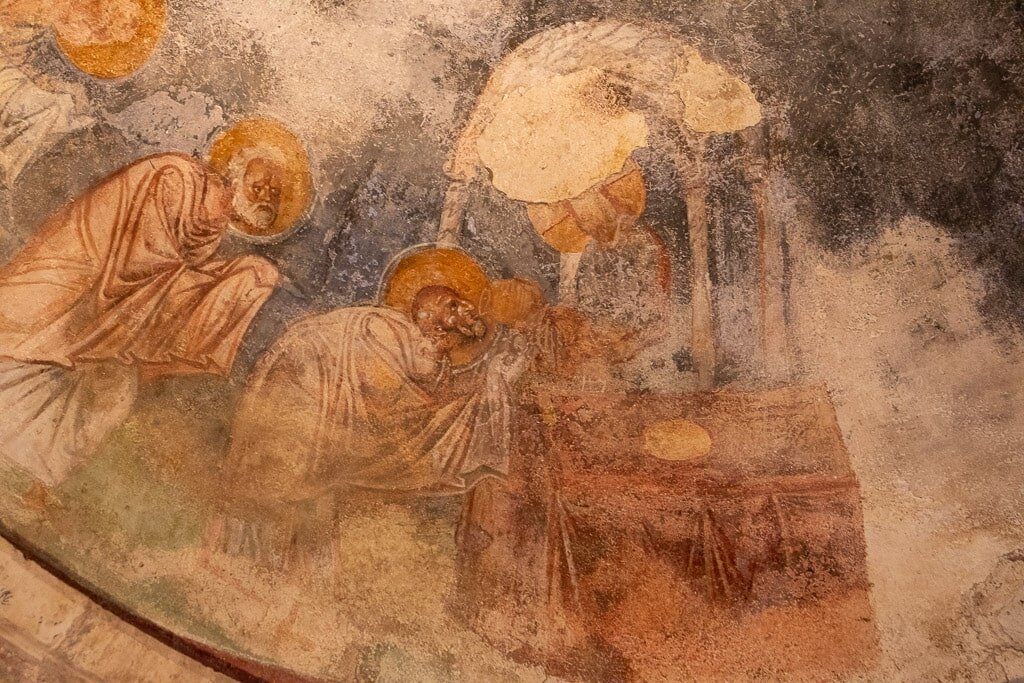
The building was in continual use as a church until 1923 when all of the Greeks left the area during the population exchange between Turkey and Greece. This church was in use at the same time as my church in Tennessee, which is a pretty crazy thought.
This was my favorite fresco in the church. On one side Jesus is distributing the bread and on the other the wine to His disciples.
Judas hiding his face.
The bones of St. Nicholas were apparently stolen and taken to Bari, Italy but you can see where his remains were once entombed. There was actually quite a strange moment that happened right after entering the church. As I was gazing at a fresco of St. Nicholas a lady on my right was doing yoga poses and having someone take her picture and a man with a tattoo on the back of his bald head was in front of me praying and kissing the wall with the fresco. It was rather bizarre but maybe a good representation of the sacred and secular in our world today.
The tomb of St. Nicholas.
A fresco of St. Nicholas.
Because the legend of Santa Claus is so wide-spread and popular today I thought it was a great privilege to be able to visit the place where it all began.
To our friends in the West, keep looking East!
Leslie Connors
Leslie is a co-founder of West2East. Originally from Tennessee, Leslie has called Turkey home for the past eight years. To read more about her, click here.
